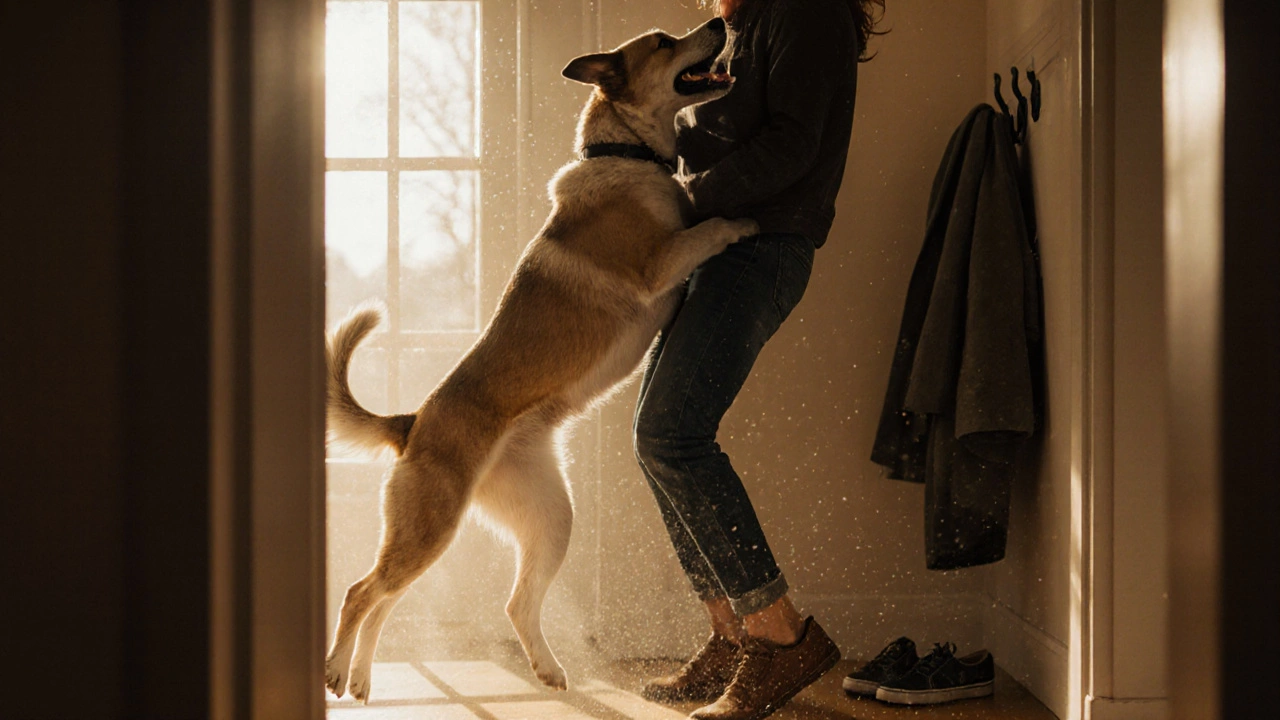Dog Emotions: Understanding What Your Dog Really Feels
When your dog wags their tail when you walk in the door, or curls up beside you when you’re sad, they’re not just being cute—they’re expressing dog emotions, the real, measurable feelings dogs experience that shape their behavior and bond with humans. Also known as canine psychology, this isn’t just anthropomorphism—it’s science. Studies show dogs feel joy, fear, anger, and even jealousy in ways similar to a two-year-old child. They don’t think like us, but they feel deeply, and understanding that changes everything about how you train, comfort, and live with them.
One of the most common separation anxiety, a distress response when dogs are left alone, often mistaken for bad behavior. Also known as dog loneliness, it’s not about being spoiled—it’s about attachment. Dogs with this condition may chew furniture, bark nonstop, or have accidents not out of spite, but because their nervous system is stuck in panic mode. The same goes for fear responses: a dog cowering at thunder isn’t being dramatic—they’re experiencing a real, overwhelming stress reaction. Recognizing these as emotional states, not disobedience, is the first step to helping them.
Then there’s dog body language, the silent language dogs use to tell us how they feel before they bark, growl, or run away. A tucked tail isn’t just "shy"—it’s fear. A stiff posture and hard stare? That’s warning, not aggression. A play bow? Pure joy. These aren’t random moves—they’re emotional signals, and learning them is like learning a new language. When you start reading these cues, you stop guessing what your dog wants and start truly understanding them.
You’ll find posts here that tackle real situations: why your dog eats grass when they’re anxious, how to tell if they need a new bed because they’re restless, and what to do when they panic during flights. These aren’t just tips—they’re responses to the emotional lives dogs live every day. Whether it’s leash pulling from frustration, crate time that’s too long, or the heartbreak of leaving them behind on a trip, every post here connects back to one truth: dogs feel, and their actions are their voice.
What you’ll find below isn’t a list of random articles—it’s a map to the inner world of your dog. You’ll learn how to spot the signs of stress, how to respond with calm, and how to build trust instead of control. No jargon. No fluff. Just clear, practical insights from people who’ve been there. If you’ve ever wondered what your dog is really thinking, you’re in the right place.

Does My Dog Know I Love Him? The Science Behind Dog Love and Bonding
Your dog doesn't need words to know you love them. Science shows they feel your bond through touch, tone, and routine. Here's how dogs understand love-and why your daily moments matter more than you think.
View more